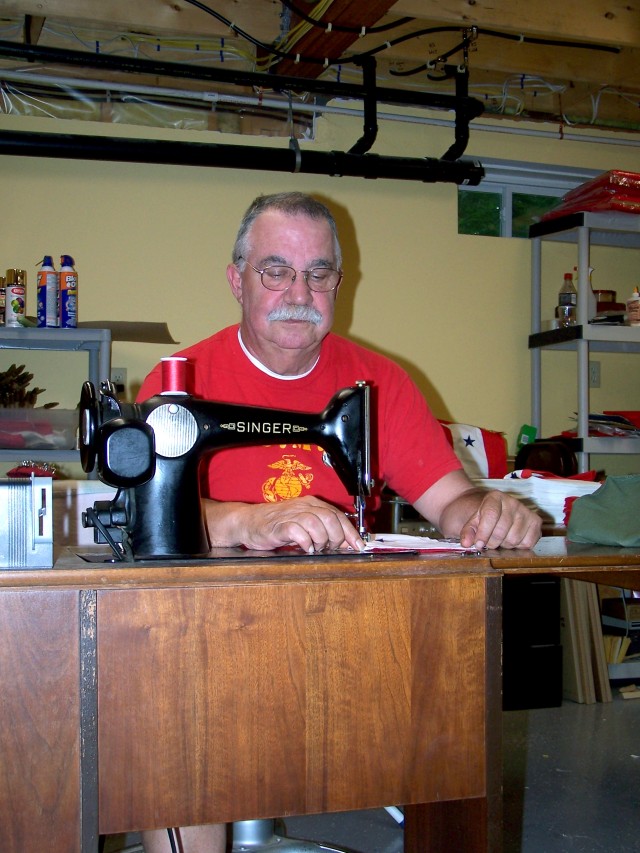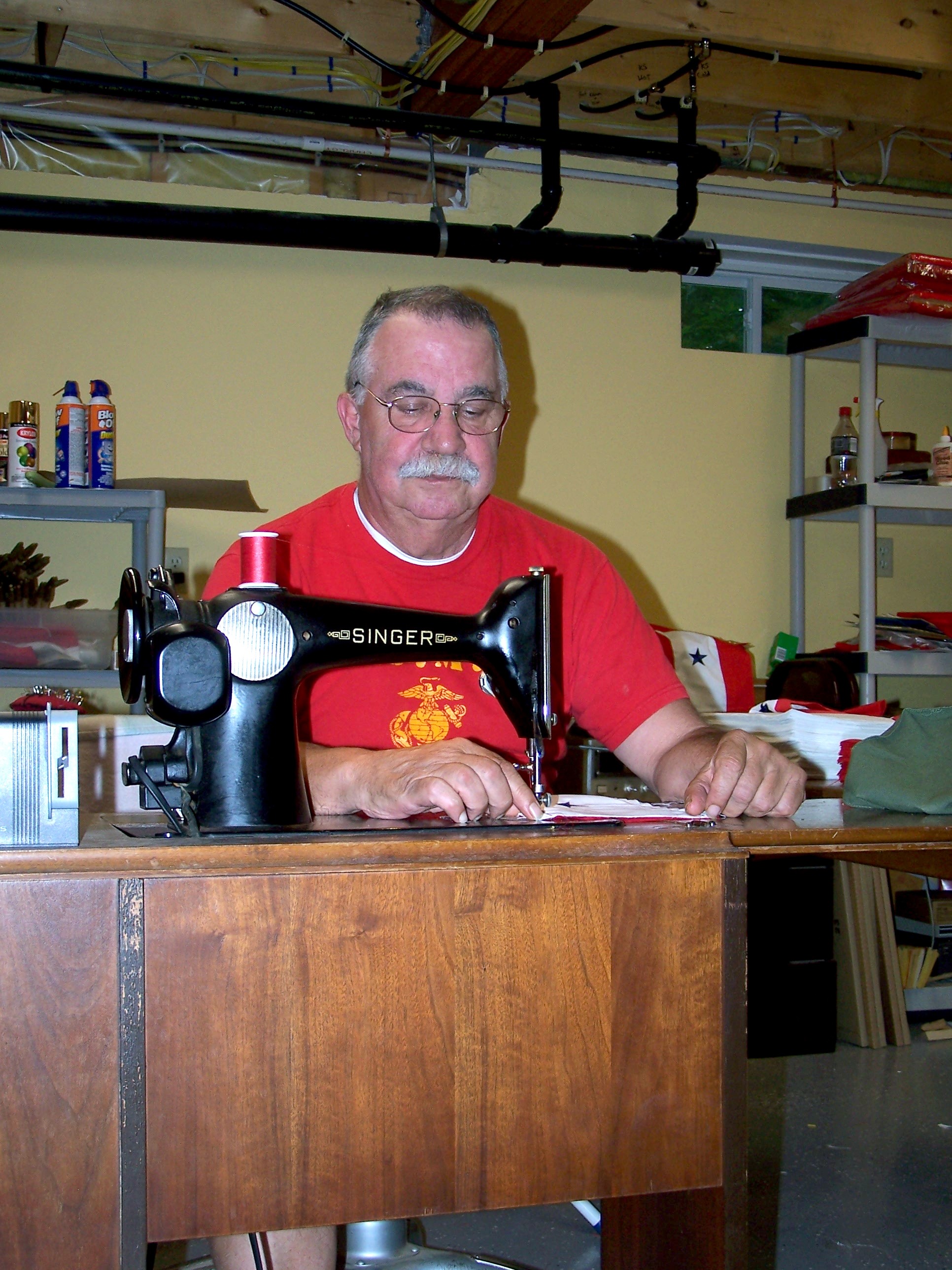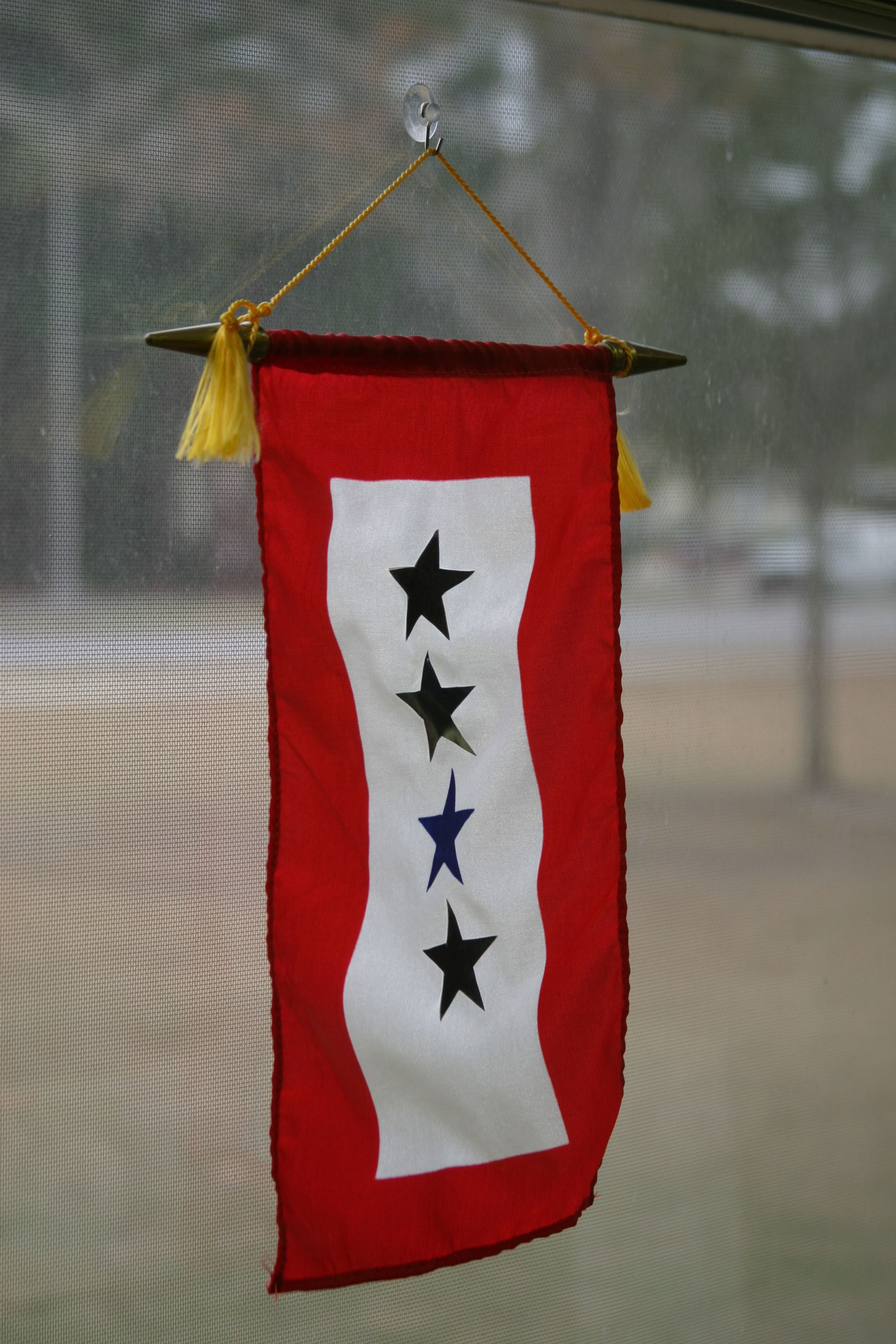They can be symbols of patience, hope and worry, or of honor, grief and the ultimate sacrifice.
They are service-star banners, which date back to World War I. Family members hang them in windows to honor loved ones serving or lost in combat - blue for living, gold for killed in action.
Former Marine Rod Raubeson, a Vietnam-era veteran, has sewn more than 3,500 such banners on a 70-year-old Singer sewing machine for families of servicemembers deployed to Operations Iraqi and Enduring Freedom.
He was inspired when he tried to find a blue-star banner four years ago for a friend who was about to deploy.
"I went shopping for them and all they had available were the single-sheet, plastic printed (ones), and I didn't think that was really appropriate," he said. "So I made one of the banners myself, and I got started that way.
"I just really enjoyed doing the banner and I thought it was one small way I could honor the families who do have their loved ones overseas."
Each banner measures 12 by 17 inches. On a busy, 12-hour day, Raubeson can make 10-12 banners, including painting the wooden hangers, which come from small flags used to decorate veterans' graves. Each banner takes about 75 to 90 minutes to complete.
He buys the fabric in 12- to 18-yard pieces and has about seven pieces of the red fabric alone on hand.
"Fiskars (rotary cutters) must love me. I go through a blade about every three days. That and the thread company," Raubeson said.
While he does accept donations, and is in talks with Singer for supplies, he doesn't have any partnerships to help with the cost of materials or shipping, and the banners are gifts to the families. Raubeson declined to say how much of his own money he's put into the project.
"It's just amazing the way that people have responded to the banners," he said. "It's really heartwarming to get the thank-you notes and the different comments that have been made. Some of it's just so hard to share because it's personal. I try not to exploit the fact that these families receive banners, so I'm kind of sensitive about it."
Raubeson is deeply attached to his banners and the people who receive them. A picture of Marine Cpl. Brian Prening, who was killed in Iraq after just two months of combat, sits in his sewing basket, a reminder of why he sews.
He also remembers one very special banner with three stars.
"One of the finest banners, for the looks and appearance and actually for the sentimentality of it, was given to an Army Reserve family. They had three daughters and one was killed in action, so that banner was topped with the gold star with two blue stars under it," he recalled.
Raubeson was recently certified by the Army's Institute of Heraldry, which now recognizes him as an official banner maker.
The rules governing who can display service-star banners are very strict. According to the institute's Web site, only spouses, parents (including foster parents), children, stepchildren and siblings are authorized to display the banners.
Churches, schools, fraternities, sororities, societies and businesses that have members serving can also hang the banners.
Raubeson also recently registered as a nonprofit: Service Star Banners, Inc. He is working on a Web site, but in the meantime, anyone interested in requesting a banner can email him at grunt_lcp160@yahoo.com.




Social Sharing